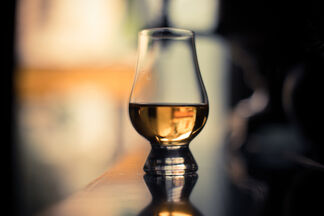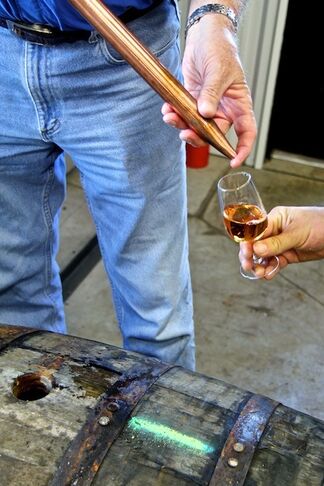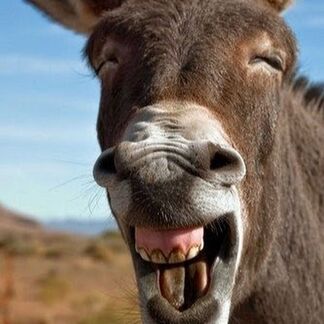Whisky Trivia
Maybe Some Facts For Your Next Quiz.....
In 1887, according to the public-house laws, it was illegal to sell whisky in larger quantities than a normal glass. Donald Grant, a public-house-keeper, was charged with such an offence by selling “two gills of whisky” to a farm servant. And the offense was a second one! Grant pleaded not guilty, but was found guilty on evidence and sentenced to pay £1 of a fine, with £2 14s 6d of expenses.
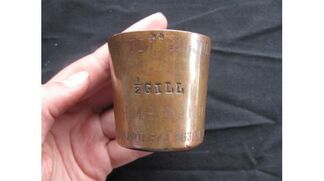
What is a Gill anyway?
The measure - not the fish thing!
The gill was introduced in the 14th century to measure individual servings of wine and later, spirits such as whisky. Pronounced like the girl’s name, Jill, it is a quarter of an imperial pint. I call out imperial, because a US pint is 20% smaller than an imperial pint – and I do not want to get you all confused. One gill = 5 imperial fluid ounces (fl. oz.), or a tad over 142 millilitres (ml). In Great Britain, the standard single measure of spirits in a pub was 1 sixth of a gill (23.7 ml) in England, and one fifth of a gill (28.4 ml) in Scotland, while one quarter gill (35.5 ml) is also quite a common whisky measure in Scotland. Who said the Scots are mean!? They definitely are not. So, Donald Grant, in fact, was guilty of selling half a pint of whisky!
If there is a Gill (Jill)
….. is there a Jack?
Yes there is! Soon after ascending to the throne of England in 1625, King Charles I wanted to increase taxes. And introduced a Jack (or Jackpot as it was to him!) which is actually half of a Gill in order to collect higher whisky sales taxes. I am really interested to find out if the nursery rhyme about Jack and Jill has anything to do with these two measures.
I guess this trick has been copied over recent years with decimalisation in the UK and the change-over to the Euro across Europe!
Enough about a Gill!
Let's Talk About A Dram
A dram is a measure of whisky poured into a whisky glass. But how much is a dram precisely? Is it dependent on the generosity of the person pouring it? Or is it something that has a real definition? Well, it started as an apothecaries weight measure before it was used as a fluid measure and actually originated from ancient Greece. The fluid dram is defined as one-eighth of a fluid ounce and is exactly equal to 3.5516328125 millilitre. Who the heck can pour that without a measure?!
But more importantly, if the true measure of a dram is one eighth of a fluid ounce, and a Gill is 5 fluid ounces, and a measure of whisky in Scotland is one fifth of a Gill, then a "Dram" in Scotland is really 8 Drams by measure. On the other hand, if a bar keeper gave you a real dram measure, you would be awfully disappointed. You following me?
In Scotland a dram came to mean a small draught of alcohol; hence the term dram-house for the taverns where one could purchase a dram. In those days whisky was a rare luxury hence the small measure. And even though a dram does have a defined size – it does tend to get larger as the evening gets later!
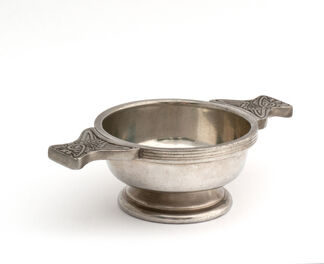
Ever heard of a Quaich?
A Cup of Friendship
A Quaich is a traditional Scottish bowl (see the photo) used for drinking and its name comes from the Gaelic “cuach” which means “cup”. Most people pronounce the word as ‘quake’ with a hard ‘k’, however, it’s pronounced as a more Scottish ‘ch’ sound, similar to loch.
Traditional quaichs were carved from a single block of wood. And they were used across the Scottish Highlands and Islands to offer a welcoming drink to a visitor. Whether it was presented by a clan chief or a crofter, the quaich was a humble creation that represented friendship. The cup is typically offered so that the receiver grasps both handles, the idea being that doing so would make it impossible for the receiver to use any weapons! Two clan chiefs would drink first from the Quaich, followed by the rest of the clans. This sounds nice, however glass bottom Quaichs were invented to keep an eye on rivals whilst the Quaich was being drunk from!
There is an elite club of whisky personalities called Keepers of the Quaich. To be accepted you must have been visible in the industry for at least 5 years. They also appoint a Master of the Quaich which is a massive honour. The qualification is at least 10 years industry contribution. Something to aspire to!
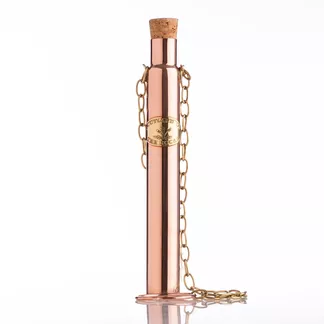
A Dipping Dog
A Way To Steal Whisky
Distillery workers created dipping dogs to lower into aging casks to steal whisky. Typically made of copper, dipping dogs originated in the 1800’s in Scotland.
A dipping dog would be attached to a chain or rope, secured to the workers’ belts and concealed in their trousers legs. The thieves could then easily take a drink on the job or sneak it out of the distillery. The cylinder became known as a ‘dog’ on account of it being a man’s best friend, that never leaves your side as it was also kept on a lead.
Between the 14th September and 6th October 1892 William Clark stole two quarts or ten gallons of spirit from the Glenfiddich Distillery by drilling a hole in a copper pipe or “worm”. He pleaded not guilty, but there were seven witnesses and Clark was sent to prison for 30 days. He was released on bail of £10.
A Whisky Thief
A Method To Test Whisky
A whisky thief is a tool that master distillers use to extract small portions of whisky from an ageing cask for sampling or quality control. The old-fashioned ones are made typically of copper and resemble a drinking straw in design. It has a coned narrow hole at the bottom and a vent hole at the top which a distiller can cover with the thumb once the device is inserted in the barrel to trap and lift the whisky out. By removing the thumb from the upper vent hole, the whisky is released to drain into drinking glasses for tasting.
Monkey Shoulder and Other Ailments
A Distillery Can Be Dangerous!
Distillery workers would shovel tons of malting barley hour after hour for long shifts. This hard work would sometimes cause their arm to hang down, a bit like a chimpanzee’s. The men called this temporary affliction ‘monkey shoulder’. Luckily the working conditions have changed, and such injury has been consigned to the past.
There are several lesser-known animal/body part afflictions that affect people of whisky. For instance, there’s Flounder Toe, a condition suffered after dropping a full cask on your foot, very similar to the lesser-known but equally painful Squid Hand. Caused by trapping your hand under a full cask. And then there is Donkey Face, which is a colloquialism for the nerve damage one suffers after falling into a tub of fermenting mash.
William Grant & Sons started producing a brand of Monkey Shoulder Blended Whisky in 2000. Then it had 3 different whiskies in it (hence the thee monkeys on the shoulder of the bottle): Glenfiddich, Balvenie and Kininvie. Nowadays many other whiskies are used, because the whisky became so popular that the three distilleries couldn’t produce enough of it.


